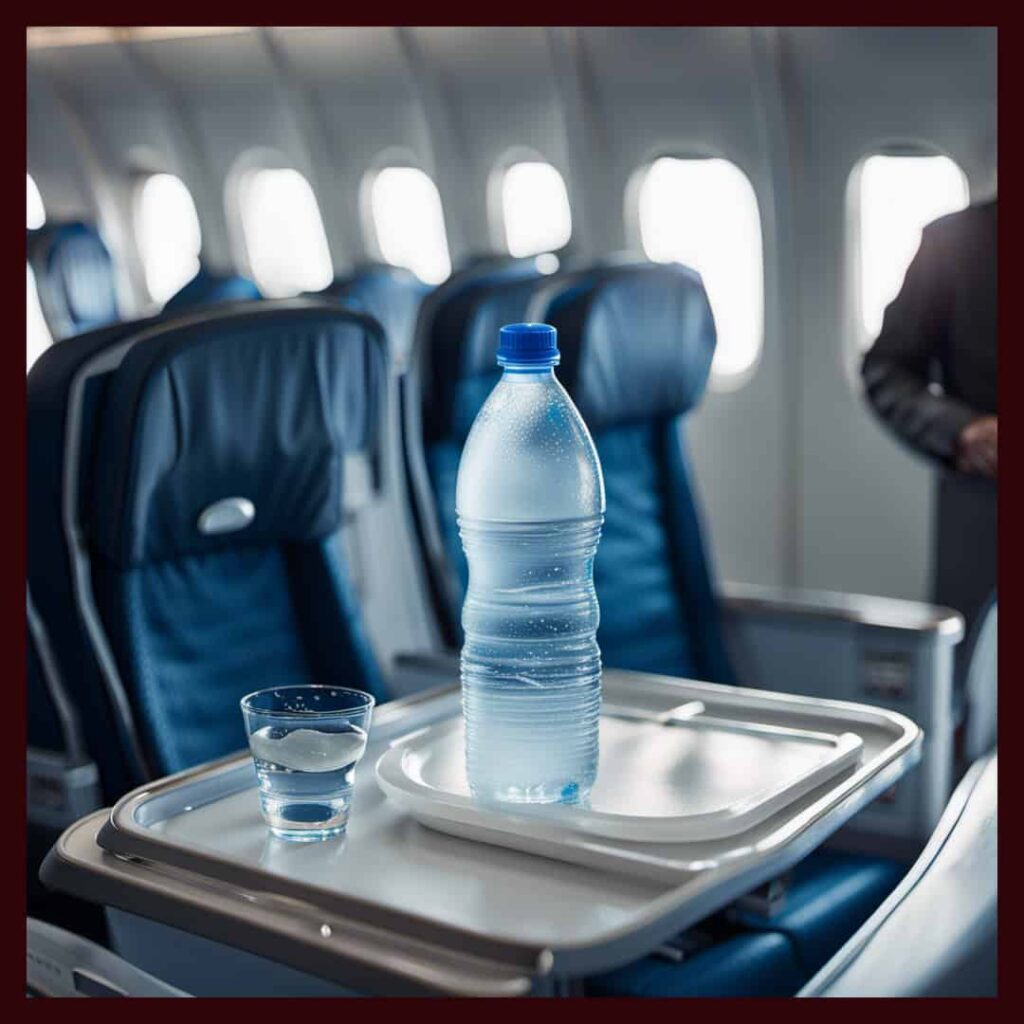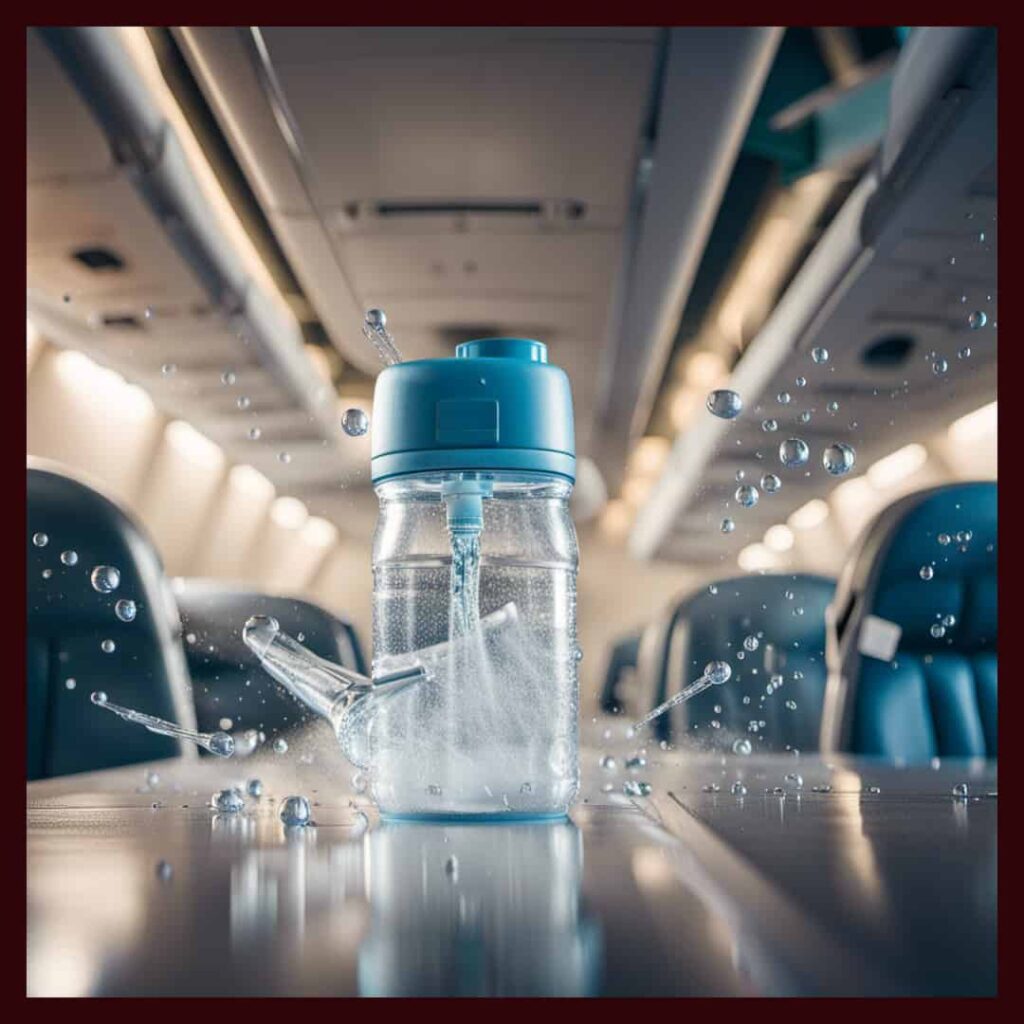Traveling by air often raises concerns about the safety of certain items, particularly when it comes to changes in air pressure during flights. One such concern involves the possibility of plastic bottles exploding on airplanes, especially when they are filled with liquids such as water or soda.
The good news is that, in most cases, plastic water bottles are unlikely to explode on a plane due to pressure changes.
However, there are factors that may increase the risk of an explosion, such as the bottle being tightly sealed with trapped air or experiencing sudden jolts in transit. It is essential to take precautions to prevent potential issues related to the transport of plastic bottles on flights.
Understanding the risks associated and taking appropriate measures can ensure a hassle-free travel experience. For example, releasing excess air from the bottles and using protective packaging can minimize the chances of explosions, allowing you to travel confidently with plastic bottles in your luggage.

Possible Reasons for Plastic Bottles Exploding on Planes
Pressure Changes in Flight
During a flight, the atmospheric pressure changes, which can affect the air pressure inside a sealed plastic bottle. When the pressure inside the bottle becomes too high, it might lead to the bottle exploding.
A simple way to address this situation is by squeezing out excess air before boarding the plane, this technique reduces the pressure within a bottle during altitude changes.
Reactions with Enclosed Contents
Certain contents within plastic bottles may increase the risk of explosion. For example, bottled soda can be sensitive to pressure fluctuations during a flight.
To minimize the risk, it is essential to properly pack and manage the bottles. This may involve securing the caps and using plastic wrap to cover the openings. Being mindful of the contents and their propensity for reactions during flights can help prevent unwanted explosions.
Effects of Explosion on Aircraft and Passengers
Damage Risks to Aircraft
In the rare event that a plastic bottle explodes on a plane, the aircraft may be at risk of minor damages. One possibility is that the explosion could lead to damage in the cargo hold. However, this risk is relatively small since plastic bottles typically don’t contain enough internal pressure to cause significant harm1.
Safety Concerns for Passengers
Passenger safety is a top priority in air travel. However, the potential explosion of a plastic bottle is not typically a significant threat.
It may cause minor inconvenience in case of leakage, but the chances of a severe impact on passenger safety are low. Nonetheless, it’s always important to handle and pack bottled items appropriately to minimize any potential problems.

Preventive Measures to Avoid Explosions
Proper Packing of Bottles
To prevent plastic bottles from exploding on a plane, it is essential to pack them correctly. One useful tip is to let out the air from the bottles before sealing them. Squeeze out almost all the excess air and quickly replace the cap. This reduces the chances of pressure changes causing an explosion.
Moreover, use leak-proof bags or containers to store the bottles. Place them in a separate compartment within your luggage, ensuring they do not have direct contact with clothes or valuables. By doing so, you minimize the risk of damage in case of a leak or explosion.
Selection of Appropriate Bottle Materials
When traveling, choose high-quality and sturdy plastic bottles for packing your liquids. Look for materials that are resistant to pressure changes and temperature fluctuations. Some bottles are specifically designed for air travel, offering better protection against explosions due to their material properties.
Remember that explosions can occur with chemicals that are not considered GHS explosives. Therefore, it is essential to understand the chemical properties of the products you are packing in your plastic bottles and ensure they are stored in a suitable container.
By following these guidelines, you can significantly reduce the risk of plastic bottles exploding on a plane. Proper packing and selecting appropriate bottle materials are key aspects to consider for a safe and hassle-free journey.
Regulations and Guidelines on Carrying Plastic Bottles
Airline Policies
Each airline can have different policies on carrying plastic bottles in your luggage, so it’s essential to check with your airline before flying. Some airlines have stricter policies than others regarding carrying liquids in plastic containers.
Government Regulations
The TSA 3-1-1 Rule governs how passengers can carry liquids, requiring them to be stored in containers with a capacity of 3.4 ounces (100 milliliters) or less. All containers need to fit inside a single, clear, quart-sized plastic bag. This rule is in place to enhance security measures and prevent possible hazardous situations. To avoid any issues, passengers should make sure their bottles and containers follow these guidelines.
One useful tip for carrying plastic bottles on a plane is to let out the air in the bottle before sealing it. This will help prevent the container from getting damaged due to changes in air pressure during the flight. Additionally, empty water bottles are permitted by the TSA, allowing travelers to carry them and refill them after passing through security checkpoints.

Frequently Asked Questions
Do soda bottles burst in checked luggage?
Yes, soda bottles can burst in checked luggage due to pressure changes during a flight. It depends on various factors, such as how well the bottle is sealed and how it is packed in the luggage.
Are plastic bottles safe in checked bags?
Plastic bottles can be safe in checked bags if they are empty or filled with liquids that are not sensitive to pressure changes. However, it is a good idea to wrap them in a plastic bag or some protective material to prevent potential leaks or damage.
How can I prevent liquids from exploding during a flight?
To prevent liquids from exploding during a flight, you can remove excess air from the container by opening the cap, squeezing out as much air as possible, and then quickly resealing it. It may also help to pack liquids in a sturdy, leak-proof container or a sealed plastic bag.
Are ketchup packets affected by air pressure on planes?
Ketchup packets can indeed be affected by air pressure changes during a flight. The pressure changes can cause the packets to expand or burst. It is best to pack them in a sealed plastic bag to contain potential leaks.
Is it safe to bring a bottle of Coke in luggage?
It depends on the individual circumstances, but a bottle of Coke may burst or leak in luggage due to changes in air pressure during a flight. If you choose to pack a bottle of Coke in your luggage, make sure to pack it in a sealed plastic bag and provide some cushioning to minimize the risk of damage.
What occurs to water bottles at high altitude?
Water bottles may expand or contract at high altitudes due to changes in air pressure. The bottles may also be prone to leaks or damage if they are not sealed properly or if they are filled with a liquid that is sensitive to pressure changes, such as carbonated beverages.



